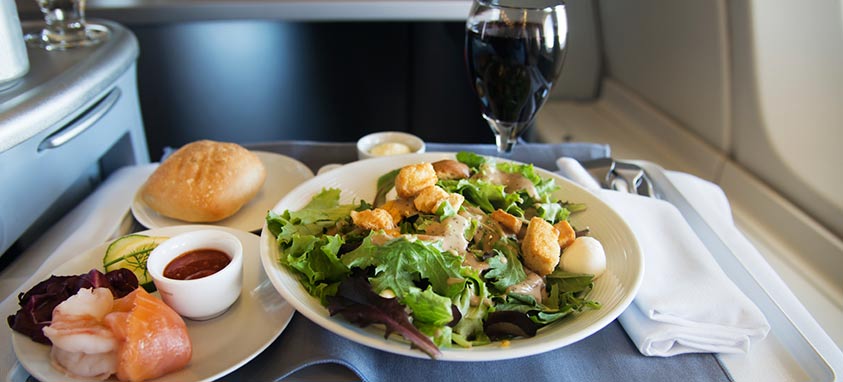Meeting planners who spend a lot of time on airplanes may think they know all about air travel, but there a lot of myths and secrets in the commercial aviation industry. Writer Megan Snedden of Roadwarriorvoices.com has come up with some fascinating, little-known facts about air travel. How many of these were you aware of?
1. For years folks have complained about the taste of airline food, but there may be some scientific merit to their arguments. In a recently published study in the Journal of Experimental Psychology, researchers at Cornell University suggest that the loud ambient noise inside a plane alters our perception of food while in flight. In experiments they found that the ability to discern salty and sweet flavors decreases while on a plane; although the ability to taste spicy, sour and bitter flavors remains about the same. In addition, other factors come into play. Air cabin pressure can reduce taste bud sensitivity by up to one third, and dryness attacks the nose, reducing the sense of smell, which is integral to the sense of taste. All of this conspires to make that little tray of food seem less appealing.
2. The captain and copilot never consume the same meal in-flight, but not because they are eager to sample everything on the menu. This is done as a precaution for food poisoning. If one pilot eats a contaminated meal and becomes sick, the other can still fly the aircraft. In terms of what they eat, the pilot generally receives the first class meal; the copilot gets what business class passengers are served.
3. Speaking of pilots and copilots, on most international flights there are actually two such teams because law requires that they have mandatory rest periods on flights lasting 12 hours or more. On such long haul journeys the pilots sleep in shifts in facilities outside of the cockpit. Domestically, pilots are legally required to get at least 10 hours of rest between shifts; 8 of those hours must involve uninterrupted sleep.
4. Although movies have been made portraying characters flinging open the airplane door while in flight, it is actually impossible to do so because cabin pressure seals them shut. In addition, for safety purposes most aircraft doors are designed so that the door is slightly larger than the opening. It must be pushed in and rotated slightly before it can actually be pushed out and opened.
5. The perception that there is more turbulence in the sky today than in years past is actually true, and scientists predict that flights may get even bumpier in the future. The smoothness of a flight depends in part on the amount of carbon dioxide in the air. As climatologists have been warning us, carbon dioxide in the atmosphere is rising dangerously. They say it may cause turbulence to intensify in North America between 10 and 40% by 2050.
More Interesting Facts About Air Travel
6. Who was the first person to take a commercial flight? That would be Abram C. Pheil, former mayor of St. Petersburg, Florida, who paid $400 for the privilege on January 1, 1914. The pilot, Tony Jannus, flew a bi-wing airboat across the bay from St. Petersburg to Tampa. The entire journey took 23 minutes.
7. As the first, second and third in the chain of command, America’s President, Vice President and Speaker of the House of Representatives never fly together because if the plane crashes and they are all killed, the government could come to a screeching halt. Similarly, Britain’s Prince Charles and Prince William do not fly together, as they are respectively second and third in line to the throne.
8. Many people are afraid of flying, however the annual risk of being killed in a plane crash for the average American is 1 in 11 million. The risk of being killed in a car accident is 1 in 5,000. Those who do experience a plane crash should hope they are sitting in the back of the aircraft. Popular Mechanics calculates that passengers who sit near the tail are 40 percent more likely to survive a crash.
9. Speaking of disasters, it is highly unlikely that lightning would be a culprit in bringing down an airplane. Pilots track and avoid most storms by flying around or above them. In the rare cases where they must fly through electrical storms, the metal from the plane serves as protection. In addition, all aircraft have built-in lightning protection systems that defend against electrical build-up.
10. In the 1980’s, Robert L. Crandall, then head of American Airlines saved the company $40,000 a year by removing one olive from each in-flight dinner salad served to passengers. He figured that they would never notice and/or complain about it… and he was right!
11. Hiring standards for flight attendants used to be extremely strict. In the late 1930s, cabin crew had to be women under the age of 30. They could not weigh more than 118 pounds, and for a period of time they also had to be registered nurses.






